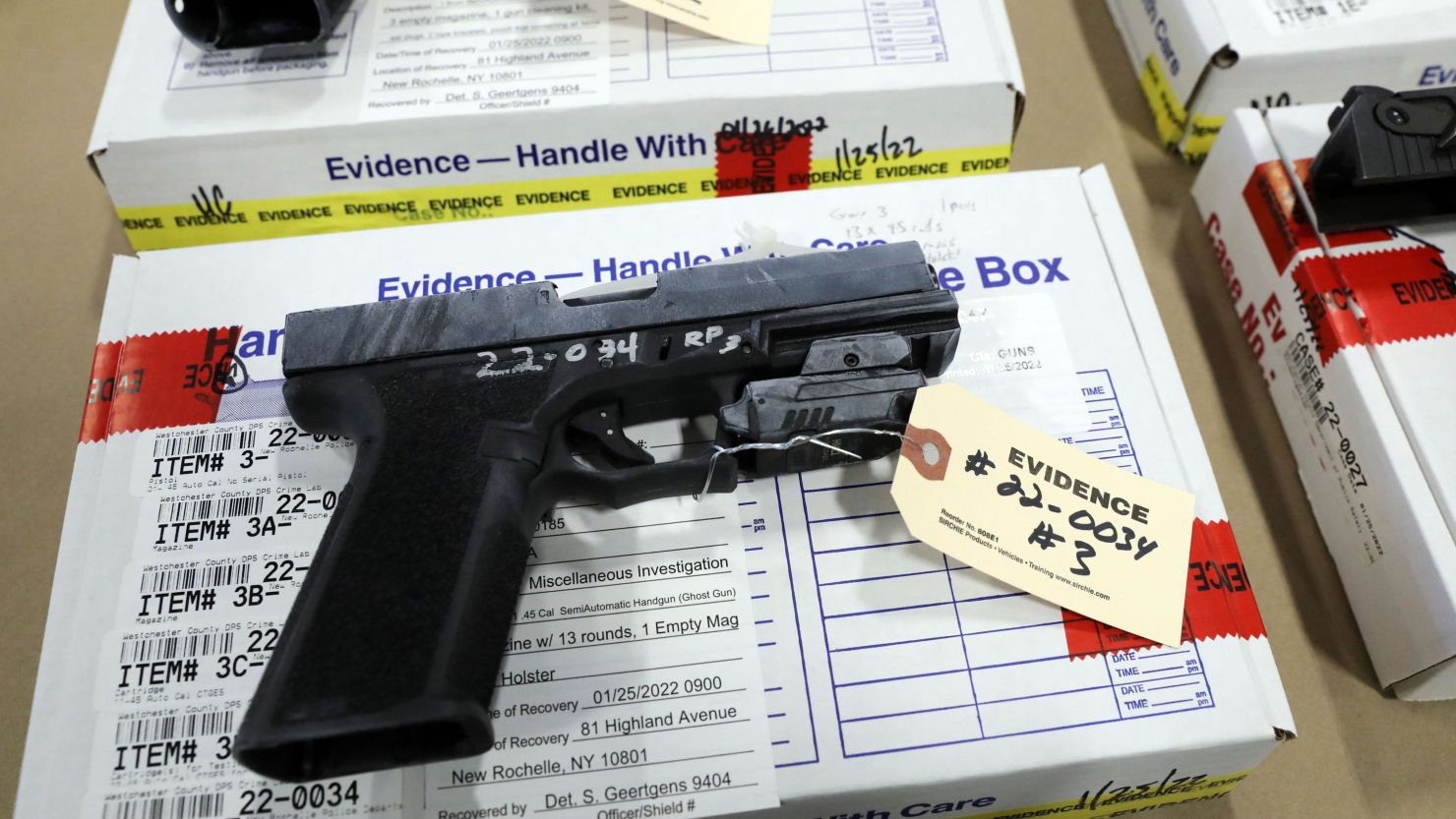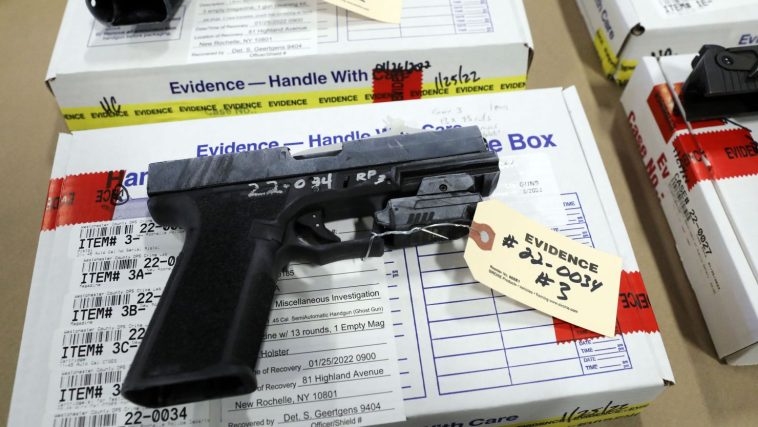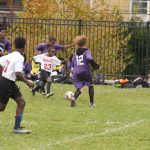

Reassessing Campus Safety and Community Action in Oakland
In recent weeks, Oakland’s schools have once again been thrust into the spotlight as incidents of violence and insecurity force communities to confront the tricky parts of ensuring campus safety. Amid a series of unsettling events—from lockdowns at Skyline High School to the tragic shooting at Laney College—residents, educators, and policymakers have found themselves grappling with tangled issues that demand shared responsibility and immediate action.
As Oakland continues to address its safety challenges, this editorial takes a closer look at the incidents, the policy debates stirring up these events, and how local communities can work together with officials to get around the confusing bits associated with rapid response and gun violence prevention efforts. In a time when every decision counts, it is clear that the path forward is loaded with problems yet remains rich in opportunities for meaningful change.
Skyline High School and the Ongoing Security Debate
The recent incident at Skyline High School has reignited a conversation about school security that many in the Oakland community have been having for years. On November 12, a shooting on campus led to a swift lockdown—a procedure now all too familiar to students and staff alike. The incident marks the third time this academic institution has faced such disruptions within a single school year.
Oakland Police Department’s rapid response was lauded by Assistant Chief James Beere, who noted that officers arrived within two minutes, providing life-saving medical assistance to the wounded 15-year-old victim. However, despite these prompt measures, the fact remains that multiple violent encounters have left both parents and students feeling overwhelmed about the future of safe education in the area.
Critics note that while immediate response has improved, the hidden complexities of school security still require attention. Enhanced measures—such as improved surveillance systems, increased police presence, and better communication channels with the local school district—are seen as essential steps for building a safer campus environment. Yet, some argue that these immediate fixes may not handle the nerve-racking long-term challenges, especially when community trust is on the line.
Timeline of Recent Incidents: A Closer Look
To understand the current state of affairs at Skyline High and other educational institutions in Oakland, it is instructive to review a brief timeline of recent incidents. This table provides a clear snapshot of multiple events that have contributed to the escalating concerns:
| Date | Event | Details |
|---|---|---|
| September 26 | False Alarm Lockdown | OPD responded to a report of a student carrying a firearm—a threat later determined to be unfounded. |
| November 4 | Security Team Intervention | Lockdown enforced to remove “an upset parent” from campus, raising questions about visitor screening protocols. |
| November 12 | Shooting Incident | An armed confrontation led to a lockdown, with the victim—a young student—receiving immediate medical care. Two juvenile suspects were arrested on charges related to using ghost guns. |
| Recent Incident (Laney College) | Tragic Shooting of Athletic Director | Occurred during a field trip, leading to extended lockdowns and community outrage as officials examine campus protocols and emergency response measures. |
This sequence of events illustrates the severity of the situation and reinforces the urgent need to address not only the immediate risks but also the fine points of overall campus security planning.
Ghost Guns and the Broader Gun Violence Debate
The fact that the weapons used in the recent incidents were so-called ghost guns—a type of untraceable firearm assembled from incomplete kits—has added a critical dimension to the discussion. Ghost guns illustrate the nerve-racking twists and turns of modern gun violence in a way that challenges traditional policing methods and legal regulations.
In Oakland, the presence of these weapons on school campuses has sparked debates on several fronts:
- Legislation: Current regulations struggle to keep pace with the ease at which ghost guns can be assembled. Lawmakers are under pressure to introduce measures that are both effective and politically acceptable.
- Accountability: With the technology available to produce these weapons in home workshops, tracking the origin of a firearm becomes a tangled issue. This demands a new approach that takes into account the subtle details of modern assembly processes.
- Enforcement: Law enforcement agencies are tasked with finding their way through the maze of legal loopholes while addressing immediate safety concerns, making the situation both off-putting and complicated.
In many respects, ghost guns represent a broader challenge in the gun violence debate—one where the small distinctions in the law can have large effects on community safety. Experts emphasize that to make a critical change, policy must be as adaptive and innovative as the technologies that allow for such weapon production.
Community and School Responses Amid Safety Concerns
In the aftermath of these unsettling events, community leaders and school officials find themselves tasked with managing public sentiment as much as the safety issues themselves. Skyline High School’s principal, Rebecca Huang, described the incident as a time to unite the community with increased security protocols and open dialogue. In a message to families, she stressed the importance of making every student feel safe and supported—a sentiment echoed by community and school district officials alike.
Several proactive steps have been proposed to manage these tricky parts of campus safety, including:
- Upgrading Security Systems: This includes installing more advanced cameras and emergency communication systems that can better alert both school officials and law enforcement during an incident.
- Expanding Staff Training: Teachers, administrators, and security personnel are encouraged to participate in regular safety drills that cover the myriad of small twists that come with unexpected emergencies.
- Community Town Meetings: Open forums are being set up to invite parents, students, and local officials to share their concerns and suggestions, helping staff and law enforcement figure a path toward improved campus safety.
In many ways, school security in Oakland is a microcosm of larger societal challenges dealing with trust, safety, and institutional accountability. With community members increasingly engaged, there is hope that these safety measures will not only prevent future incidents but also rebuild trust in institutions that have been on edge for too long.
Policy Implications: The Role of Local and Federal Government
The incidents at Skyline High School and Laney College underscore more than just the immediate need for improved security measures—they highlight systemic issues that require intervention from local, state, and federal authorities. As community members and educators work through the ongoing problems, policymakers must address a number of key areas:
- Stricter Gun Regulations: Many argue that the availability of ghost guns points to a gap in current gun laws—a gap that must be closed to ensure public safety. Policy suggestions include tighter tracking of gun parts and more rigorous background checks.
- Resource Allocation for Schools: Funding for safety measures, mental health support, and emergency planning is essential. Local and federal governments need to prioritize making these resources as accessible as possible to public schools.
- Collaborative Law Enforcement: Cross-agency cooperation is not just an ideal—it’s a necessary strategy. Educators and local police must work closely to create systems that allow for the rapid exchange of information during incidents.
For policymakers, success in these areas depends on taking a deep look into both the obvious and hidden complexities of gun violence and campus security. Each detailed discussion in community forums or legislative hearings reveals subtle parts of policy that can either help bridge or further widen the gaps in effective safety regulation.
Learning from Past Incidents: A Community’s Call for Improvement
While the recent events are distressing, they have also provided an opportunity for Oakland to reflect on previous incidents and gain insights into how the community can better support its youngest members. Faculty and local leaders have noted that each lockdown and security threat has served as a reminder of the urgent need to not only react but also proactively implement lasting changes. In looking back, several issues stand out that merit attention:
- The Frequent Use of Lockdowns: Multiple lockdowns over a single academic year do more than disrupt classes—they exacerbate anxiety among students and parents alike. The repeated nature of these incidents calls for a review of current crisis management strategies.
- The Strain on School Resources: Every security scare diverts time and funds away from educational priorities, stressing the importance of integrated approaches that balance safety with the academic mission of schools.
- The Psychological Toll: The mental health of students and staff can be affected by ongoing security concerns. Continuing to provide behavioral health support is a must-have component of any comprehensive safety plan.
Reflecting on these issues, many in Oakland believe that addressing the small distinctions in daily practices can lead to significant improvements. By learning from the fine points of previous incidents, school districts can steer through future challenges and build systems that reduce response times, enhance communication, and rebuild the trust that is essential to a thriving educational environment.
Empowering Communities Through Transparent News Reporting
Local media outlets play an undeniably key role in raising public awareness about the safety challenges facing Oakland schools. The detailed reporting by organizations dedicated to highlighting community voices and holding institutions accountable has been instrumental in galvanizing support for policy interventions. It is important, therefore, for citizens to remain informed and engaged with the news that directly affects them.
When media reports cover both the facts of an incident and the broader context—including the problematic nature of ghost guns and the administrative responses abroad—the community is better equipped to dig into these issues and demand lasting solutions. In many respects, transparent news reporting acts as another layer of accountability—one that motivates policy changes and fosters a collective commitment to public safety.
Local outlets have not shied away from discussing the nerve-racking details of each incident while also spotlighting the resilience of schools that work to maintain order amidst turbulent times. By continuously sharing up-to-date and candid information, these platforms encourage a civic dialogue that is essential for any meaningful reform in public education and safety protocols.
Challenges in Balancing Policy, Safety, and Community Well-Being
One of the trickiest parts of addressing gun violence and school safety lies in balancing the enforcement of stricter policies with the need to create nurturing educational environments. Advocacy groups have raised concerns that heavy-handed measures might unintentionally stoke fear rather than fostering a sense of security. Therefore, it is critical to consider the following aspects:
- Maintaining Open Dialogue: Regular forums and town meetings have proven to be safe spaces where voices can be heard without resorting to polarizing rhetoric. These sessions provide residents with the ability to figure a path through challenging discussions involving policy and safety.
- Ensuring Fair Enforcement: While tougher gun laws are necessary to prevent future tragedies, rigid enforcement should not compromise the rights or dignity of community members. Law enforcement officers need to be well-trained not only in crisis response but also in community engagement and sensitivity.
- Supporting Mental Health Initiatives: Every incident casts a long shadow over the mental well-being of students and educators. Funding for mental health resources and counseling is super important to help schools recover from the psychological impact of these events.
Striking this balance is far from simple. Differences in opinion on the best path forward have often resulted in debates that are as off-putting as they are necessary. Ultimately, however, robust dialogue and measured policy interventions are viewed as the most effective ways to ensure that schools remain safe havens for education and community growth.
Innovative Approaches to Securing the Future of Oakland’s Schools
The safety dilemmas facing Oakland schools are prompting innovative discussions about how technology, policy, and community engagement can come together to build a safer future. Several forward-thinking strategies have emerged in recent months:
- Integrated Security Systems: Many schools are exploring the use of advanced technology—from real-time surveillance cameras to AI-driven analytics—that can alert officials immediately when unusual activity is detected. This approach promises to cut through the trickier parts of delayed responses and system oversights.
- Collaborative Data Sharing: By working together, school districts, local police, and community leaders can create a shared database that logs incidents and nearby threats. Having ready access to the nitty-gritty details of past events can help officials figure a path through future challenges more systematically.
- Community-Based Safety Programs: Engaging neighborhood watch programs, after-school clubs, and volunteer networks creates an ecosystem where information flows freely and proactive measures are taken long before a crisis emerges. Such grassroots efforts create flexible support systems that enhance overall safety.
These innovative approaches demonstrate that while the situation is undeniably complicated, there are tangible ways to improve overall security. The goal is not simply to react to incidents after they occur, but to forge a preventative framework that addresses both immediate and long-term risks. By embracing new technologies alongside traditional methods, Oakland can move from a reactive stance to one that is proactive and community-centered.
Exploring the Role of Educational Leadership in Crisis Management
Educational leaders are at the front line of ensuring that schools not only teach but also protect their students. At Skyline High School, Principal Rebecca Huang has been vocal about the measures being implemented to secure the campus. Her transparent communication and willingness to engage directly with concerned parents set a model for other educational institutions in similar circumstances.
Several key strategies have emerged from her approach:
- Proactive Communication: Huang’s decision to invite families to upcoming town meetings and discussions with school officials illustrates how open dialogue can help ease community tensions and build trust. Providing regular updates is one way to manage the confusing bits of crisis management.
- Collaborative Safety Audits: Encouraging external audits of security protocols invites independent experts to get into the fine shades of existing measures and offer suggestions for improvement. This outside perspective can provide reassurance to both staff and families.
- Investing in Staff Training: Prioritizing training sessions for teachers, administrators, and security personnel helps ensure that the entire campus community is prepared to work through emerging risks. The investment in human capital, in many cases, is just as key as physical measures.
Educational leadership, when paired with community engagement, holds the potential to turn even nerve-racking episodes into opportunities for improvement. These leaders are charged with the off-putting task of balancing administrative duties with emergency responsiveness—a task that, while intimidating, is critical for long-term educational success and safety.
Looking Ahead: Charting a Course for Safer Campuses
As Oakland moves forward, clear and sustained action is needed to address the complicated pieces of gun violence and school security. The recent series of incidents at Skyline High School, along with other troubling events, has provided the community with a painful reminder of what is at stake. Now is the time for local leaders, policymakers, and the community at large to figure a path that simultaneously protects lives, nurtures education, and promotes long-term societal well-being.
Key areas for future focus include:
- Legislative Reforms: Implementing and enforcing stricter controls on ghost guns and related untraceable weaponry is a step that cannot be postponed. Lawmakers need to cut through the tangled issues of current gun regulations and introduce measures that adapt to modern challenges.
- Strengthening School Infrastructure: Beyond bolstering physical security, it is super important to invest in mental health programs, crisis preparedness training, and community partnerships. These measures support the overall climate of safety and trust in educational environments.
- Enhanced Funding for Safety Programs: Consistent and reliable funding is critical for initiating lasting changes. Federal, state, and local governments must rally resources to ensure that all schools have access to top-notch safety systems and personnel training.
By acknowledging the nerve-racking nature of these challenges and actively seeking new solutions, Oakland can build a model for other communities facing similarly full-of-problems situations. The path ahead may be tricky, and the twists and turns can be confusing, but with a united effort, a safer future for every student is within reach.
Conclusion: A Call for Connected Communities and Thoughtful Policy
In closing, the recent events across Oakland’s educational institutions serve as a stark reminder that safety in schools is a multifaceted challenge. From the immediate need to provide rapid response during emergencies to the long-term task of overhauling policies related to gun control and campus security, the issues at hand are as challenging as they are essential.
Community members, educators, and policymakers must work together to plug the gaps in current systems. Transparent communication, innovative security solutions, and robust legislative action together form the backbone of a safe educational environment. As local media continues to shine a light on every subtle part of this debate, it is imperative that all stakeholders remain dedicated to implementing practical changes that provide reassurance and sustained progress.
Let this be a moment of turning point. Though the challenges are intimidating and the journey ahead is loaded with problems, every step taken toward enhancing safety is a step toward empowering our future generations. Whether it is through revising outdated gun laws, investing in technology, or strengthening community bonds, Oakland stands at a crossroads—one that demands thoughtful, informed, and united action.
Now more than ever, ensuring safe campuses is not solely the responsibility of law enforcement or school districts; it is the combined duty of every resident, every parent, and every official who believes in the value of education and community well-being. In the face of such confusion and daunting issues, let us find our way through together, working hand in hand to forge a future where every child can learn in an environment free from fear.
For the sake of our schools, for the sake of our children, and for the promise of a safer Oakland, our collective voice matters. As we look to the future with determination, we must champion policies that modernize our safety protocols, support educational infrastructure, and, most importantly, build bridges between communities and the institutions designed to protect them.
By sharing stories, dissecting policies, and actively engaging in constructive dialogue, we can transform the current narrative. Oakland’s experiences, though filled with challenges and nerve-racking moments, hold the potential to inspire change across the nation. Now is the time to stand together, address the tricky parts and tangled issues head-on, and make education a bastion of safety and opportunity once again.
Originally Post From https://oaklandside.org/2025/11/14/suspects-skyline-high-school-shooting-ghost-guns-police-charges/
Read more about this topic at
American Journalism Project – Rebuilding local news
Local News Impact Consortium | Researching information and …


